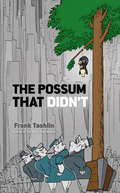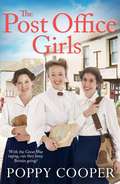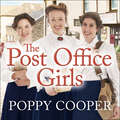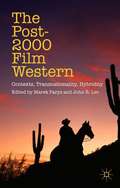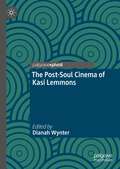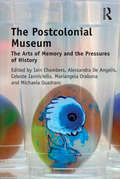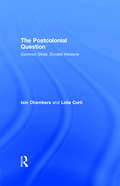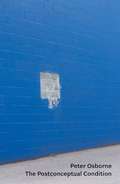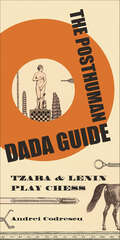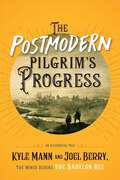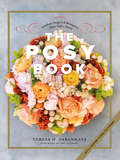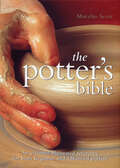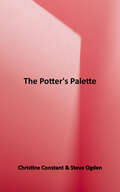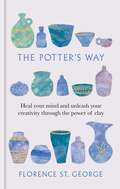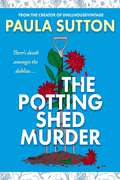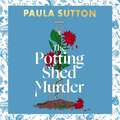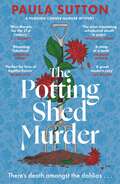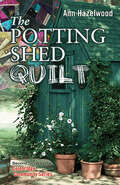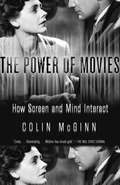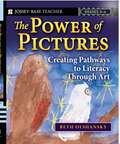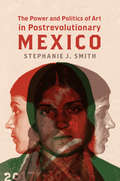- Table View
- List View
The Possible South: Documentary Film and the Limitations of Biraciality
by R. Bruce BrasellUsing cultural theory, author R. Bruce Brasell investigates issues surrounding the discursive presentation of the American South as biracial and explores its manifestation in documentary films, including such works as Tell about the South, bro•ken/ground, and Family Name. After considering the emergence of the region’s biraciality through a consideration of the concepts of racial citizenry and racial performativity, Brasell examines two problems associated with this framework. First, the framework assumes racial purity, and, second, it assumes that two races exist. In other words, biraciality enacts two denials, first, the existence of miscegenation in the region and, second, the existence of other races and ethnicities.Brasell considers bodily miscegenation, discussing the racial closet and the southeastern expatriate road film. Then he examines cultural miscegenation through the lens of racial poaching and 1970s southeastern documentaries that use redemptive ethnography. In the subsequent chapters, using specific documentary films, he considers the racial in-betweenness of Spanish-speaking ethnicities (Mosquitoes and High Water, Living in America, Nuestra Communidad), probes issues related to the process of racial negotiation experienced by Asian Americans as they seek a racial position beyond the black and white binary (Mississippi Triangle), and engages the problem of racial legitimacy confronted by federally nonrecognized Native groups as they attempt the same feat (Real Indian).
The Possum That Didn't
by Frank TashlinThere once was a happy little possum, the happiest animal in the entire forest, who always wore a great big smile. This jolly creature was content simply to hang by his tail from a tree until he was discovered by a group of picnickers. Mistaking the possum's upside-down smile for a frown, the people resolve to rescue him ― and they turn the little possum's world topsy-turvy. Strikingly illustrated in black-and-white, this memorable satire of cultural intolerance was created by Frank Tashlin, the famed animator, film director, and author of The Bear That Wasn't. Readers of all ages will appreciate the book's message as well as its distinctive drawings.
The Post Office Girls: Book One in a heartwarming and uplifting new wartime saga series
by Poppy CooperWith the Great War raging, can they keep Britain going? 1915. On Beth Healey's eighteenth birthday, she hopes that she will be able to forget the ghastly war and celebrate. But that evening, her twin brother Ned announces that he has signed up to fight. No longer able to stand working in her parents' village shop while others are doing their bit, Beth applies to join the Army Post Office's new Home Depot on the Regent's Park, and is astounded to be accepted. She will be responsible for making sure that letters and parcels get through to the troops on the front line. Beth is thrilled to be a crucial part of the war effort and soon makes friends with fellow post girls Milly and Nora, and meets the handsome James. But just as she begins to feel that her life has finally begun, everything starts falling apart, with devastating consequences for Beth and perhaps even the outcome of the war itself. Can Beth and her new friends keep it all together and find happiness at last?
The Post Office Girls: Book One in a heartwarming and uplifting new wartime saga series
by Poppy CooperWith the Great War raging, can they keep Britain going?1915. On Beth Healey's eighteenth birthday, she hopes that she will be able to forget the ghastly war and celebrate. But that evening, her twin brother Ned announces that he has signed up to fight. No longer able to stand working in her parents' village shop while others are doing their bit, Beth applies to join the Army Post Office's new Home Depot on the Regent's Park, and is astounded to be accepted. She will be responsible for making sure that letters and parcels get through to the troops on the front line. Beth is thrilled to be a crucial part of the war effort and soon makes friends with fellow post girls Milly and Nora, and meets the handsome James. But just as she begins to feel that her life has finally begun, everything starts falling apart, with devastating consequences for Beth and perhaps even the outcome of the war itself. Can Beth and her new friends keep it all together and find happiness at last?The Post Office Girls is perfect for fans of Johanna Bell, Daisy Styles and Nancy Revell.
The Post-2000 Film Western
by Marek Paryz John R. LeoThis collection of thirteen essays by scholars from the US, UK, Netherlands, Germany, Poland, Australia and Hong Kong, explores the trajectories of the post-2000 film Western in American, transnational, inter-generic, and inter-medial contexts. With examples ranging from major American films, through acclaimed international productions, to works such as experimental films and television commercials, the contributors seek to account for the appeal and currency of the film Western today. Theyare concerned with the issues of historical revisionism and contemporary ideologies, of audience and industry, of the cross-pollination of film genres, and highlight a plethora of problems that contemporary Westerns have addressed. They make a case for the Western's capacity for renewal – through the reworking of staple themes, incorporation of other film genres, varied political implications, and foreign appropriations.
The Post-Soul Cinema of Kasi Lemmons
by Dianah WynterIn this edited volume, Kasi Lemmons, the first African-American woman auteur to solidly and steadily produce a full body of work in cinema—an oeuvre of quality, of note, of international recognition—will get the full film-studies treatment. This collection offers the first scholarly examination of Lemmons’ films through various frameworks of film theory, illuminating her highly personal, unique, and rare vision. In Lemmons’ worldview, the spiritual and the supernatural manifest in the natural, corporeal world. She subtly infuses her work with such images and narratives, owning her formalism, her modernist aesthetic, her cinematic preoccupations and her ontological leanings on race. Lemmons holds the varied experiences of African-American life before her lens—the ambitious bourgeoise, the spiritually lost, the ill and discarded, and the historically erased—and commits to capturing the nuances and differentiations, rather than perpetuating essentialized portrayals. This collection delves into Lemmons’ iconoclastic drive and post-soul aesthetic as emanations of her attitudes toward personal agency, social agency, and social justice.
The Postcolonial Museum: The Arts of Memory and the Pressures of History
by Iain Chambers Celeste Ianniciello Alessandra De Angelis Mariangela OrabonaThis book examines how we can conceive of a ’postcolonial museum’ in the contemporary epoch of mass migrations, the internet and digital technologies. The authors consider the museum space, practices and institutions in the light of repressed histories, sounds, voices, images, memories, bodies, expression and cultures. Focusing on the transformation of museums as cultural spaces, rather than physical places, is to propose a living archive formed through creation, participation, production and innovation. The aim is to propose a critical assessment of the museum in the light of those transcultural and global migratory movements that challenge the historical and traditional frames of Occidental thought. This involves a search for new strategies and critical approaches in the fields of museum and heritage studies which will renew and extend understandings of European citizenship and result in an inevitable re-evaluation of the concept of ’modernity’ in a so-called globalised and multicultural world.
The Postcolonial Question: Common Skies, Divided Horizons
by Iain Chambers Lidia CurtiBrings together renowed and emerging critical voices to respond to the questions raised by the concept of the 'post-colonial'. The contributors explore the diverse cultures which are shaping our global future.
The Postconceptual Condition: Postconceptual Condition
by Peter OsborneTracking the postconceptual dimensions of contemporary artIf, as Walter Benjamin claimed, “it is the function of artistic form … to make historical content into a philosophical truth,” then it is the function of criticism to recover and to complete that truth. Never has this been more necessary or more difficult than with respect to contemporary art. Contemporary art is a point of condensation of a vast array of social and historical forces, economic and political forms and technologies of image production. Contemporary art expresses this condition, Osborne maintains, through its distinctively postconceptual form. These essays—extending the scope and arguments of Osborne’s Anywhere or Not at All: Philosophy of Contemporary Art—move from philosophical consideration of the changing temporal conditions of capitalist modernity, via problems of formalism, the politics of art and the changing shape of art institutions, to interpretation and analysis of particular works by Akram Zataari, Xavier Le Roy and Ilya Kabakov, and the postconceptual situation of a crisis-ridden New Music.
The Posthuman Dada Guide: Tzara & Lenin Play Chess (The Public Square #6)
by Andrei CodrescuThis is a guide for instructing posthumans in living a Dada life. It is not advisable, nor was it ever, to lead a Dada life."—The Posthuman Dada GuideThe Posthuman Dada Guide is an impractical handbook for practical living in our posthuman world—all by way of examining the imagined 1916 chess game between Tristan Tzara, the daddy of Dada, and V. I. Lenin, the daddy of communism. This epic game at Zurich's Café de la Terrasse—a battle between radical visions of art and ideological revolution—lasted for a century and may still be going on, although communism appears dead and Dada stronger than ever. As the poet faces the future mass murderer over the chessboard, neither realizes that they are playing for the world. Taking the match as metaphor for two poles of twentieth- and twenty-first-century thought, politics, and life, Andrei Codrescu has created his own brilliantly Dadaesque guide to Dada—and to what it can teach us about surviving our ultraconnected present and future. Here dadaists Duchamp, Ball, and von Freytag-Loringhoven and communists Trotsky, Radek, and Zinoviev appear live in company with later incarnations, including William Burroughs, Allen Ginsberg, Gilles Deleuze, and Newt Gingrich. The Posthuman Dada Guide is arranged alphabetically for quick reference and (some) nostalgia for order, with entries such as "eros (women)," "internet(s)," and "war." Throughout, it is written in the belief "that posthumans lining the road to the future (which looks as if it exists, after all, even though Dada is against it) need the solace offered by the primal raw energy of Dada and its inhuman sources.
The Postmodern Pilgrim's Progress: An Allegorical Tale
by Kyle Mann Joel BerryFrom the editor-in-chief and managing editor of the Babylon Bee! A millenial seeker travels through a twenty-first century take on The Pilgrims's Progress with allegorical versions of all our modern vices tempting him along the way—as well as a few timeless personified virtues that just might see him through. Biting satire and uncommon wisdom from the creators of the internet's most influential comedy site, and an author of national bestsellerThe Babylon Bee Guide to Wokeness!Ryan Fleming is a young agnostic reeling from his brother&’s death. Though he is deeply angry with God, he makes good on a promise he made to his brother in the final moments of his life: to visit a church at least once. But shortly after his arrival, the slick megachurch&’s shoddily installed video projector falls on his head—sending Ryan through a wormhole into another world. After a narrow escape from the City of Destruction, where the comfortably numb townspeople are oblivious to the fire and brimstone falling like bombs in their midst and destroying their homes, Ryan finds himself on a quest: To make it back to his own universe, he must partner with a woman named Faith to awaken a long-sleeping King—the World-Maker who can make all things new. Replete with characters ripped straight from the twenty-first century American church—including Radical, Mr. Satan, the Smiling Preacher, and others—this sometimes-humorous, always-insightful trek parallels Christian&’s fictional journey in Pilgrim&’s Progress. Prepare to laugh, cry, cringe, feel convicted, and ultimately be changed by the time the story ends. The Postmodern Pilgrim&’s Progress is brought to you by Kyle Mann and Joel Berry, the two comedic minds behind The Babylon Bee—which, with 250,000 newsletter subscribers and more than fifteen million page views per month, is the most popular satirical news site on the planet.
The Posy Book: Garden-inspired Bouquets That Tell A Story
by Teresa H. Sabankaya“Like a favorite recipe, a posy is meant to be savored and shared. Try it yourself, and … welcome a bit of floral enchantment into your life.” —Amy Stewart, author of The Drunken Botanist Inspired by the Victorian-era language of flowers, a posy is a small, round bouquet of flowers, herbs, and plants meant to convey a message, such as dahlias for gratitude, sunflowers for adoration, or thyme for bravery. These floral poems have become Teresa Sabankaya’s signature. Brides want them for their weddings, but a posy is a lovely gift any time of year, and one that readers can easily put together from their garden or with blooms from their local florist. In The Posy Book, Sabankaya shares step-by-step instructions, floral recipes for more than 20 posies, and ideas for seasonal variations. A modern floral dictionary, with 12 original paintings by celebrated illustrator Maryjo Koch, will help readers craft their own posies filled with personal meaning.
The Pot That Juan Built
by Nancy Andrews-GoebelJuan Quezada creates pots in the traditional style of the Casas Grandes people. This real-life story relays how Juan's pioneering work has changed a poor village into a prosperous community.
The Potter's Bible: An Essential Illustrated Reference for Both Beginner and Advanced Potters (Artist/craft Bible Ser.)
by Marylin ScottAn essential guide for beginner and advanced potters, featuring step-by-step photographs to guide you through a comprehensive range of techniques.Begin making beautiful ceramics, even if you’ve never attempted pottery before, following detailed information about:Essential tools and studio equipmentDifferent types and constituencies of clay—including earthenware, stoneware, porcelain, and rakuForming methods—including pinching, coiling, slabbing, press molding, throwing, and trimmingAdding texture and patterns—with techniques such as sgraffito, stamping, inlaying, and burnishingPainting and printing—using slip, banding and combing, resists, and underglazesGlazes and post-firing techniques—including salt and soda glazes, lusters, and metal leafEssential technical resources—such as glaze recipes, types of kilns and firings, and health and safety tipsWith its combination of practical advice, exciting images, inspirational ideas, and a glossary, this book is a must-have for all potters at any stage of their career.
The Potter's Palette: A Practical Guide to Creating Over 700 Illustrated Glaze and Slip Colors
by Christine Constant Steve OgdenNever again suffer the uncertainty of mixing a color and getting an entirely different fired result. This reference walks the potter through glaze circulation, formulation, and use. Includes color bars to show fired results.
The Potter's Way: Heal your mind and unleash your creativity through the power of clay
by Florence St. George'Warm, honest and full of inspiring tips, Florence's story shows us that pottery has the power to soothe the heart and heal the mind.' JULIA SAMUEL, author of Grief Works and This Too Shall PassSometimes, the smallest things lead to the biggest changes. When struggling with depression and feeling lost after the birth of her daughter, Florence St. George began experimenting with a lump of clay on her kitchen table. Pot by pot, bowl by bowl, she discovered that as her hands became busier, her mind grew calmer. In just a few years, Florence went from complete beginner to contestant on The Great Pottery Throw Down, learning what clay has to teach along the way: that creativity doesn't have to be expensive, that pottery is the perfect antidote to internet overload and that working with clay can ground you like nothing else.In The Potter's Way, Florence shares her tips on how to get started on your own pottery journey, from hand-building pinch pots to throwing large-scale vessels on the wheel. This captivating book invites us all to slow down, reflect and experience the transformative power of creativity.'I have found nothing outside myself that can truly fill the void, but this book demonstrates that pottery is about as close as it gets.' NICK LOVE, film director and writer
The Potter's Way: Heal your mind and unleash your creativity through the power of clay
by Florence St. George'Warm, honest and full of inspiring tips, Florence's story shows us that pottery has the power to soothe the heart and heal the mind.' JULIA SAMUEL'An honest and redemptive story about the power of fun and creativity - I've always said if it was mandatory to wear a smock once a week and get messy with clay, adults would be happier.' MIRANDA HARTSometimes, the smallest things lead to the biggest changes. When struggling with depression and feeling lost after the birth of her daughter, Florence St. George began experimenting with a lump of clay on her kitchen table. Pot by pot, bowl by bowl, she discovered that as her hands became busier, her mind grew calmer. In just a few years, Florence went from complete beginner to contestant on The Great Pottery Throw Down, learning what clay has to teach along the way: that creativity doesn't have to be expensive, that pottery is the perfect antidote to internet overload and that working with clay can ground you like nothing else.In The Potter's Way, Florence shares her tips on how to get started on your own pottery journey, from hand-building pinch pots to throwing large-scale vessels on the wheel. This captivating book invites us all to slow down, reflect and experience the transformative power of creativity.'I have found nothing outside myself that can truly fill the void, but this book demonstrates that pottery is about as close as it gets.' NICK LOVE'This book is a journey, with a map. Like all maps, it relay's history, from the first point of contact to pivotal moments along the way. I like a map. They help us to find our way.' INDIA HICKS
The Potting Shed Murder (A Hill House Vintage Murder Mystery)
by Paula SuttonFrom the creator of Hill House Vintage and &“Queen of Cottagecore&” (Vogue), a fresh, witty, fun, and delightfully quirky cozy crime novel set in a seemingly sleepy English village for fans of Richard Osman, Parini Shroff, Benjamin Stevenson, and Anthony Horowitz. &“Miss Marple for the 21st Century.&” ―S.J. Bennett, author of The Windsor KnotWelcome to the beautiful, bucolic village of Pudding Corner, where there's death amongst the dahlias . . . Daphne Brewster has gladly swapped south London for Pudding Corner, a Norfolk hamlet full of quintessentially English charm. With a mix of stone cottages, Georgian architecture, and Victorian Gothic houses all nestled together and surrounded by fields of gold and green, Pudding Corner and its neighboring village of Pepperbridge seem as far from the bustle of city living as one can get. For Daphne, joy at moving into beautiful Cranberry Farmhouse with her husband, James, and their three young children is tempered by some concerns about being the only Black woman for miles around. But within a few short months, Daphne has become known as the parish&’s &“Vintage Lady&” and has set up her own shop. Business is thriving, and so is her family. As for Pudding Corner, it&’s rapidly revealing itself to be filled with complicated, intertwined lives on par with anything she left behind. Then the local school&’s headmaster is found dead in his allotment patch, unleashing a storm of secrets and scandal. Even a sleepy village has its social hierarchy, and as her new friend, Minerva, becomes a target of whispers and speculation, Daphne can&’t resist getting involved. Fighting for the underdog comes as naturally as sourcing the perfect vintage piece. But there is more at stake here than Daphne could have guessed, and a killer who has succeeded once is all too willing to try again . . .
The Potting Shed Murder: A totally unputdownable cosy murder mystery (Hill House Vintage Murder Mysteries)
by Paula SuttonThe debut cosy crime novel by cottage-core queen and social-media sensation Paula Sutton, the creator of Hill House Vintage.Welcome to the beautiful, bucolic village of Pudding Corner, where there's death amongst the dahlias...Newly arrived in the quaint village of Norfolk's Pudding Corner, Daphne Brewster is glad to be leaving London life behind. As time goes by, and she finds herself in great demand as the village's unofficial Vintage Lady, she begins to acclimatise to this new, more sedate way of life.But when the village school's headmaster is discovered dead, lying face down in his allotment patch, everything changes. His wife refuses to accept a verdict of natural causes, and the village is suddenly ablaze with scandal about 'the potting shed murder'. When the headmaster's influential widow points her finger at Minnerva, Daphne's new friend, the fingers of the village begin to point with her.As the unjust politics and machinations of power in a sleepy rural village slowly become apparent to her, Daphne decides to clear her friend's name, and begins to investigate...A deliciously addictive and quirky whodunnit, perfect for fans of Agatha Christie's classic murder mysteries, and page-turners by Janice Hallett and Richard Osman.(P) 2024 Little Brown Book Group Limited for and on behalf of Dialogue Books
The Potting Shed Murder: A totally unputdownable cosy murder mystery (Hill House Vintage Murder Mysteries)
by Paula Sutton'Miss Marple for the 21st Century. Loved it. A must-read' S.J. Bennett, author of The Windsor KnotWelcome to the sleepy village of Pudding Corner, a quintessentially English haven of golden cornfields, winding cobbled lanes ... and murder.Daphne Brewster has left London behind and is settling into her family's new life in rural Norfolk, planting broad beans in raised beds and vintage hunting for their farmhouse. But when the local headmaster is found dead in his potting shed, amongst his allotment cabbages, the village is ablaze: Who would kill beloved Mr Papplewick, pillar of the community? Daphne soon comes to realise perhaps the countryside isn't so idyllic after all...When the headmaster's widow points her finger at Minnerva, Daphne's new friend, Daphne vows to clear her name. Sneaking into the crime scene and chasing down rumours gets her into hot water with the local inspector - until she comes across a faded photograph that unearths a secret buried for forty years... They say nothing bad ever happens in close-knit Pudding Corner, but Daphne is close to the truth - dangerously close...There's death amongst the dahlias... A truly unputdownable whodunnit by Paula Sutton - otherwise known as Instagram's happiest influencer: Hill House Vintage, the queen of cottagecore - an unforgettable new voice in cosy crime. Perfect for fans of Richard Osman, Janice Hallett and Richard Coles.'Blooming fabulous! The perfect book to get lost in . . . The cosiest of cosy crime' Veronica Henry'A village of secrets, a cast of zany characters: this is a romp of a read that warms the heart' Orlando Murrin, author of Knife Skills for Beginners 'A really fun, fast-paced and atmospheric whodunnit. Perfect for fans of Agatha Raisin' Jessica Bull, author of Miss Austen Investigates'Begs to be read in the cosiest of spaces' Tasha Coryell, author of Love Letters to a Serial Killer'A great modern cosy' Ian Moore, author of Death and Croissants'Delightful . . . Charming and fresh' Kuchenga Shenjé, author of The Library Thief'I absolutely loved it! Utterly absorbing. Daphne is such a brilliant protagonist, I couldn't help but love her. And that twist!' Lisa Hall, author of The Mysterious Double Death of Honey Black'The most wholesome whodunit I've ever read . . . I loved it!' Stephanie Yeboah'Such a fun cosy crime mystery with a really exciting ending! I hope that we're going to see Daphne solving more crimes in the future!' Kate Weston, author of You May Now Kill the Bride 'A quintessentially English murder mystery. Paula Sutton brings a new voice to the cosy genre with her fresh take and witty twist on modern village life. Vintage crime!' Jo Furniss, author of Dead Mile'An utterly delightful whodunnit unfolds in this pitch-perfect cosy mystery. Absolutely glorious!' Victoria Dowd, author of The Smart Woman's Guide to Murder'Beautiful, mesmerising and immensely satisfying, The Potting Shed Murder shows us how even the most idyllic places can hide secrets. Rich in detail and bursting with warmth, I read this book well into the night, finding myself unable to put it down. Sutton is a master storyteller' Awais Khan, author of No Honour and Someone Like Her
The Potting Shed Murder: A totally unputdownable cosy murder mystery (Pudding Corner Murder Mysteries)
by Paula Sutton'Miss Marple for the 21st Century. Loved it. A must-read' S.J. BENNETTWelcome to the sleepy village of Pudding Corner, a quintessentially English haven of golden cornfields, winding cobbled lanes ... and murder.Daphne Brewster has left London behind and is settling into her family's new life in rural Norfolk, planting broad beans in raised beds and vintage hunting for their farmhouse. But when the local headmaster is found dead in his potting shed, amongst his allotment cabbages, the village is ablaze: Who would kill beloved Mr Papplewick, pillar of the community? Daphne soon comes to realise perhaps the countryside isn't so idyllic after all...When the headmaster's widow points her finger at Minnerva, Daphne's new friend, Daphne vows to clear her name. Sneaking into the crime scene and chasing down rumours gets her into hot water with the local inspector - until she comes across a faded photograph that unearths a secret buried for forty years... They say nothing bad ever happens in close-knit Pudding Corner, but Daphne is close to the truth - dangerously close...There's death amongst the dahlias... A truly unputdownable, twist-packed whodunnit that is perfect for fans of Richard Osman, Janice Hallett and Richard Coles.'Reminiscent of Poirot . . . Daphne Brewster is easily the most interesting whodunnit sleuth in year' Paterson Joseph'Blooming fabulous! The perfect book to get lost in . . . The cosiest of cosy crime' Veronica Henry'A village of secrets, a cast of zany characters: this is a romp of a read that warms the heart' Orlando Murrin, author of Knife Skills for Beginners 'A really fun, fast-paced and atmospheric whodunnit. Perfect for fans of Agatha Raisin' Jessica Bull, author of Miss Austen Investigates'Begs to be read in the cosiest of spaces' Tasha Coryell, author of Love Letters to a Serial Killer'A great modern cosy' Ian Moore, author of Death and Croissants'Delightful . . . Charming and fresh' Kuchenga Shenjé, author of The Library Thief'I absolutely loved it! Utterly absorbing. Daphne is such a brilliant protagonist, I couldn't help but love her. And that twist!' Lisa Hall, author of The Mysterious Double Death of Honey Black'The most wholesome whodunit I've ever read . . . I loved it!' Stephanie Yeboah'Such a fun cosy crime mystery with a really exciting ending! I hope that we're going to see Daphne solving more crimes in the future!' Kate Weston, author of You May Now Kill the Bride 'A quintessentially English murder mystery. Paula Sutton brings a new voice to the cosy genre with her fresh take and witty twist on modern village life. Vintage crime!' Jo Furniss, author of Dead Mile'An utterly delightful whodunnit unfolds in this pitch-perfect cosy mystery. Absolutely glorious!' Victoria Dowd, author of The Smart Woman's Guide to Murder'Beautiful, mesmerising and immensely satisfying, The Potting Shed Murder shows us how even the most idyllic places can hide secrets. Rich in detail and bursting with warmth, I read this book well into the night, finding myself unable to put it down. Sutton is a master storyteller' Awais Khan, author of No Honour and Someone Like Her
The Potting Shed Quilt (Colebridge Community Series)
by Ann HazelwoodThe author of The Basement Quilt delivers a novel of mystery, romance—and ghosts!—as flower shop owner Anne Brown searches for a place to call home. The second saga of Anne Brown and the Colebridge Community! In The Basement Quilt, the debut novel by Ann Hazelwood, you got to know the family and friends of Anne Brown, a plucky florist whose daily ups and downs are as familiar as your own. In this follow-up book, Anne and her fiancé, Sam, start house-hunting, or is that haunting? Once again, a quilt holds keys and clues to important family secrets, but whose family is it this time? And why would anyone hide a quilt in a potting shed? Life continues apace for Anne’s family and friends, too. Share in their joys and sorrows as Colebridge goes about every community’s business. The Potting Shed Quilt is not just the title of this sequel—the quilt itself is a character. You’ll want to meet other quilt “characters” throughout the series.Praise for Ann Hazelwood and the Colebridge Community Series“I found myself immersed in the tale of this extended family and this wonderful quaint town . . . You will laugh, cry and share in their hopes and dreams.” —Community News“Ann Hazelwood knows a few things about the human spirit, family and dreaming big. Add a mixture of the love of quilting and all the things Missouri historic and otherwise; you will experience the words and passion of this unique and gifted author. Enjoy the experience!” —StreetScape Magazine
The Power Of Movies
by Colin McginnHow is watching a movie similar to dreaming? What goes on in our minds when we become absorbed in a movie? How does looking “into” a movie screen allow us to experience the thoughts and feelings of a movie’s characters? These and related questions are at the heart ofThe Power of Movies,a thoughtful, invigorating, and remarkably accessible book about a phenomenon seemingly beyond reach of our understanding. Colin McGinn–“an ingenious philosopher who thinks like a laser and writes like a dream,” according to Steven Pinker–enhances our understanding of both movies and ourselves in this book of rare and refreshing insight.
The Power Of Pictures: Creating Pathways To Literacy Through Art, Grades K-6
by Beth OlshanskyIn The Power of Pictures book and companion DVD, Beth Olshansky introduces teachers to her innovative art-based approach to literacy instruction. Widely practiced in classrooms across the country, the model has been proven by research to improve literacy achievement with a wide range of learners, especially those who struggle with verbal skills. At the heart of her approach is the Artists/Writers Workshop. Through study of quality picture books and hands-on art experiences, students learn to visualize, “paint pictures with words,” and ultimately create their own extraordinary artistic and literary work. The book and DVD explain how any teacher can successfully use this process to enable all students, particularly low performers, to make dramatic gains in...
The Power and Politics of Art in Postrevolutionary Mexico
by Stephanie J. SmithStephanie J. Smith brings Mexican politics and art together, chronicling the turbulent relations between radical artists and the postrevolutionary Mexican state. The revolution opened space for new political ideas, but by the late 1920s many government officials argued that consolidating the nation required coercive measures toward dissenters. While artists and intellectuals, some of them professed Communists, sought free expression in matters both artistic and political, Smith reveals how they simultaneously learned the fine art of negotiation with the increasingly authoritarian government in order to secure clout and financial patronage. But the government, Smith shows, also had reason to accommodate artists, and a surprising and volatile interdependence grew between the artists and the politicians. Involving well-known artists such as Frida Kahlo, Diego Rivera, and David Alfaro Siqueiros, as well as some less well known, including Tina Modotti, Leopoldo Mendez, and Aurora Reyes, politicians began to appropriate the artists' nationalistic visual images as weapons in a national propaganda war. High-stakes negotiating and co-opting took place between the two camps as they sparred over the production of generally accepted notions and representations of the revolution's legacy—and what it meant to be authentically Mexican.

